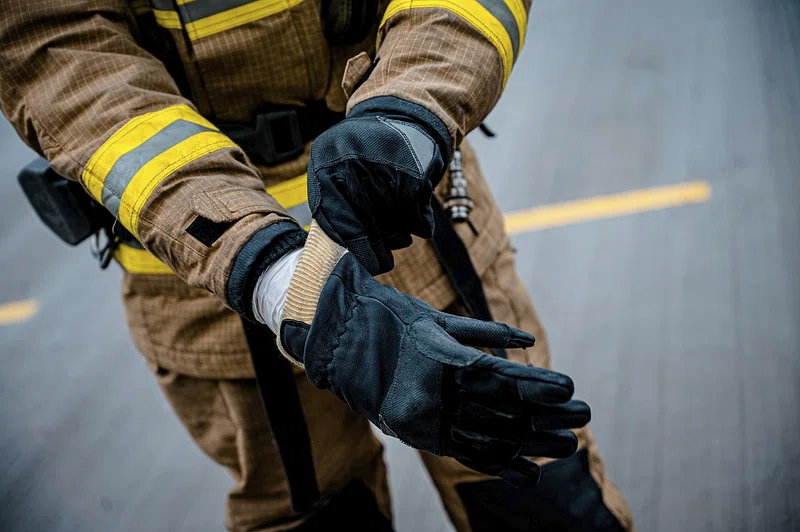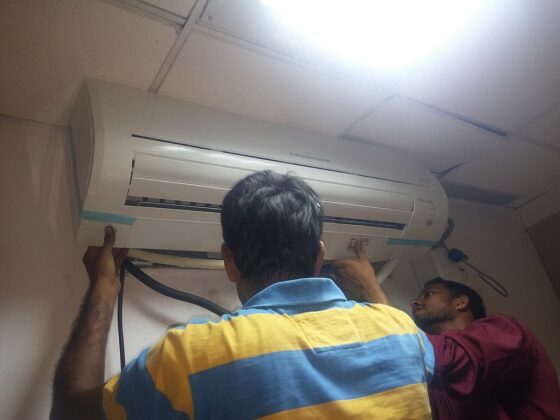Table of Contents Show
Linemen are professionals responsible for maintaining, repairing, and constructing electrical systems, often working in dangerous environments.
The nature of their job exposes them to potential hazards, including electrical burns, falls, cuts, and bruises. As such, the role of protective clothing in ensuring their safety cannot be overemphasized.
This article will provide a comprehensive understanding of the importance of protective clothing in lineman work safety.
Importance of Protective Clothing in Lineman Work Safety
The use of protective clothing in lineman work safety is critical in reducing injuries and fatalities.
The protective clothing is designed to protect against a variety of hazards, including electrical shocks, arc flashes, and burns.
Protective clothing for linemen includes specialized materials that have been tested and certified to withstand electrical hazards.
Additionally, protective clothing for linemen should also be designed to provide adequate insulation and flame resistance, making it possible for them to work in a high-risk environment safely.
Types of Protective Clothing for Linemen
Protective clothing for linemen comes in various forms, including jackets, pants, gloves, boots, and helmets.
These types of protective clothing have been designed to provide adequate protection against specific hazards. Lineman protective clothing should meet the following standards:
- Arc flash protection
- Flame resistance
- Electrical insulation
- High visibility
- Comfort
Factors to Consider When Selecting Protective Clothing
Selecting the right protective clothing for linemen is essential to ensuring their safety. When choosing protective clothing, the following factors should be considered:
- Hazard Assessment: Conducting a hazard assessment is critical in identifying the potential hazards that linemen may encounter while performing their duties.
- Material: The material used to manufacture protective clothing is crucial to its effectiveness. Protective clothing and lineman tools should be made from high-quality materials that are resistant to electrical hazards.
- Comfort: Protective clothing should be comfortable to wear, allowing linemen to perform their tasks effectively without feeling uncomfortable.
- Fit: Protective clothing should fit correctly to ensure that it does not hinder movement or compromise safety.
Maintenance of Protective Clothing
Proper maintenance of protective clothing is essential in ensuring its effectiveness. Protective clothing should be cleaned regularly, and any damages should be repaired promptly.
Additionally, linemen should be trained on how to inspect and maintain their protective clothing to identify any issues that may compromise their safety.
Challenges Associated with Protective Clothing for Linemen
One of the significant challenges associated with protective clothing for linemen is the weight and bulkiness of the clothing.
Protective clothing can be challenging to maneuver, limiting linemen’s mobility and making it difficult to perform their duties effectively.
Additionally, protective clothing can also be uncomfortable, causing linemen to become fatigued quickly.
Innovation in Protective Clothing Technology for Linemen
Innovation in protective clothing technology has led to the development of lighter, more comfortable, and more effective protective clothing for linemen.
Some of the new technologies include the use of cooling fabrics, which help to regulate body temperature, and the use of advanced materials that are lighter and more durable than traditional materials.
Additionally, advancements in insulation technology have made it possible to provide adequate protection while reducing the weight and bulkiness of protective clothing.
Future of Protective Clothing for Linemen
The future of protective clothing for linemen looks promising, with the continued development of innovative materials and technologies.
Future protective clothing is expected to be lighter, more comfortable, and more effective in protecting against a variety of hazards.
There is also an increasing focus on incorporating technology into protective clothing, such as sensors that can detect hazards and alert linemen of potential dangers.
Conclusion
Protective clothing plays a crucial role in ensuring the safety of linemen working in hazardous environments. With proper protective clothing, linemen can minimize the risks associated with their job and work safely.
It is essential to choose the right protective clothing based on the hazards they may encounter and to maintain and inspect the protective clothing regularly to ensure its effectiveness.
FAQs
What type of protective clothing do linemen need?
1. Linemen require protective clothing that is resistant to electrical hazards, flame-resistant, and provides adequate insulation. The protective clothing should also be comfortable and fit correctly.
How often should linemen inspect and maintain their protective clothing?
2. Linemen should inspect and maintain their protective clothing regularly, ideally before each use. Any damages should be repaired promptly, and the protective clothing should be cleaned regularly.
What are some of the challenges associated with protective clothing for linemen?
3. The weight and bulkiness of protective clothing can be challenging for linemen to maneuver, limiting their mobility and causing fatigue. Additionally, protective clothing can be uncomfortable, especially in hot environments.
What advancements in protective clothing technology can linemen expect in the future?
4. The future of protective clothing for linemen looks promising, with advancements in lightweight materials, insulation technology, and the incorporation of sensors that can detect hazards and alert linemen of potential dangers.
How can linemen ensure their protective clothing is effective in protecting against hazards?
5. Linemen should conduct a hazard assessment to identify potential hazards, choose protective clothing that is appropriate for the hazards they may encounter, and maintain and inspect their protective clothing regularly to ensure its effectiveness.










